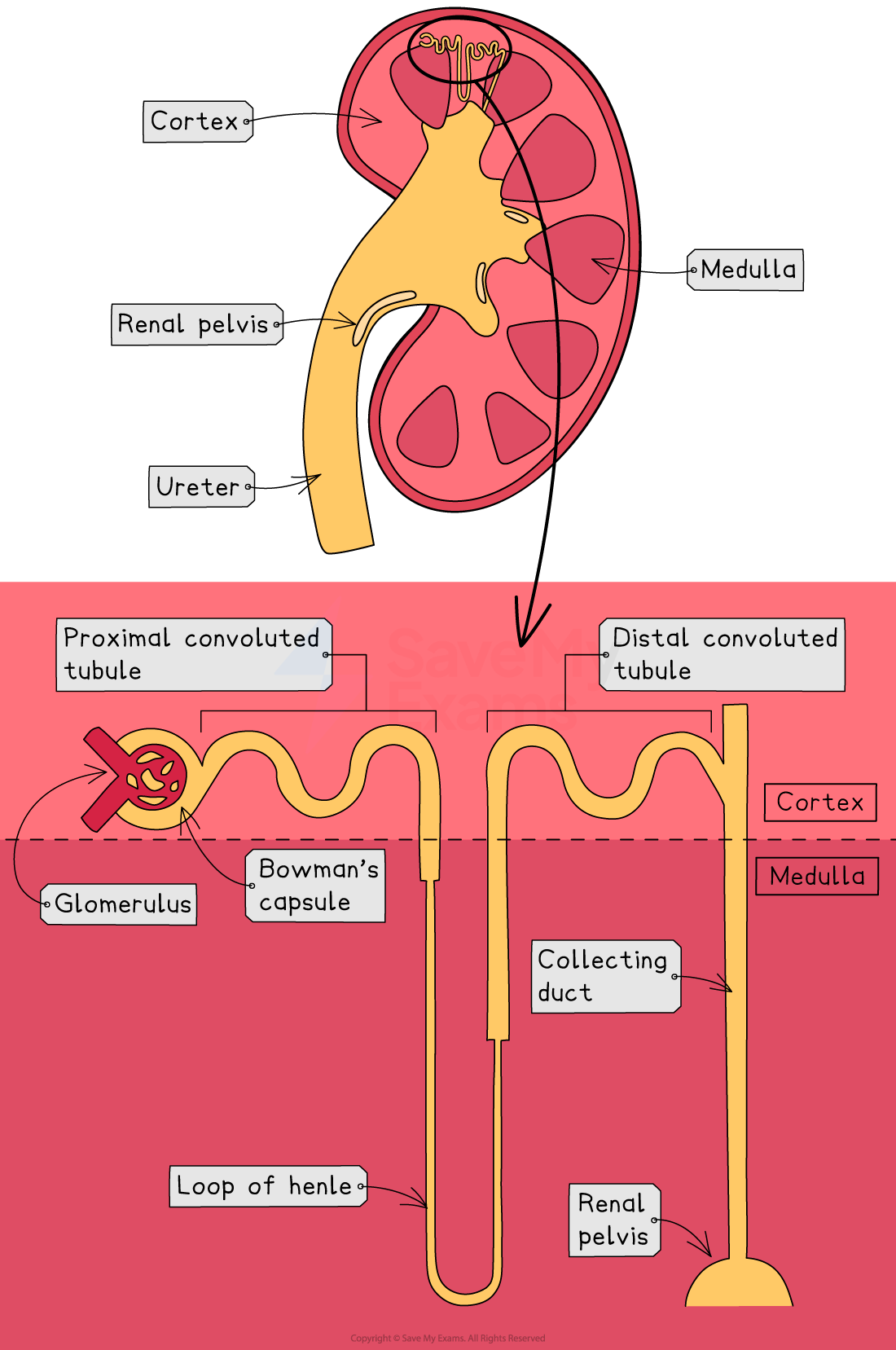Nephron Structure (AQA A Level Biology): Revision Note
Exam code: 7402
Kidney nephron structure
The kidneys are responsible for:
osmoregulation: regulating the water content of the blood
excretion: the removal of metabolic waste and excess substances from the blood
The internal structure of the kidney includes:
the outer renal cortex
the inner renal medulla
the renal pelvis at the centre of the kidney where urine is funnelled into the ureter
thousands of tiny tubes, known as nephrons
Kidney nephrons span the cortex and medulla and lead into the pelvis; nephrons contain the following structures:
glomerulus
Bowman's capsule
proximal convoluted tubule
loop of Henle
distal convoluted tubule
collecting duct


Unlock more, it's free!
Did this page help you?